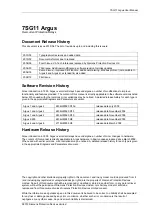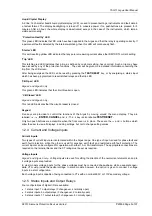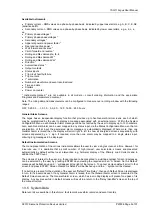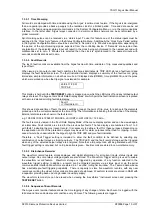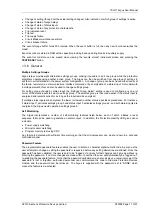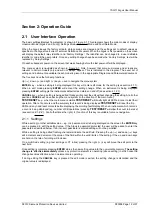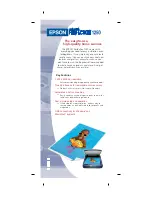
7SG11 Argus User Manual
©2013 Siemens Protection Devices Limited
P20006 Page 4 of 37
Section 1: Relay Description
1.1 Overview
The Argus range of overcurrent protection combines the power and flexibility of microprocessor technology with
decades of experience in the field of overcurrent protection and auto-reclose. A wide range of protection elements
are supplemented by advanced features such as control, metering, data storage and fibre-optic based
communications.
Features
IDMTL phase overcurrent stage (50/51)
3 DTL phase overcurrent stages (50)
IDMTL earth-fault stage (50N/51N)
3 DTL earth-fault stages (50N)
2 instantaneous and DTL SEF/REF stages with harmonic rejection (50N)
Trip circuit supervision (74TC)
Circuit breaker failure protection (50BF)
Single pole, three pole and four pole variants
True RMS measurement
Status inputs with independent pick-up and drop-off timers and logic inversion to reduce scheme engineering
Flexible supply voltage ranges
Low AC/DC burden
Eight independent settings groups
Self, hand and electrical reset contacts
Extensive fault, sequence of event and disturbance recorder
IEC60870-5-103 fibre-optic communications
Modbus RTU communications
Continuous self-supervision of operation and power supply
1.2 Hardware
1.2.1 Case
The Argus relay is housed in a drawout case designed for either panel mounting or modular 19” racking systems.
The case is 4U (177 mm) high and will be of size 4, size 6 or size 8 width.
The chassis of the Argus can be withdrawn from the case by pulling on the handles provided. Shorting contacts
ensure that CT circuits and normally closed contacts remain short-circuited. All output contacts will be
disconnected before any input contacts in order to prevent maloperation.
The rear terminals are designed to take two wires terminated using ring crimps and are secured using M4 screws.
1.2.2 Front Cover
After the Argus has been commissioned it is sealed by fixing a clear plastic cover over the front. This allows the
user to see the entire front of the relay, but only allows access to the
and
buttons, allowing all of the menus
to be viewed but not changed. The only ‘action’ which is permitted is to reset the Fault Data Display, latched
output relays and the trip
LED
by using the
TEST/RESET
function of the
button.
1.2.3 User Interface / Fascia
The user interface is designed to provide a user friendly method of entering settings and retrieving data from the
Argus relay.
Relay Information
The Reyrolle logo appears in the top left corner of the Argus.
At the top right an information label is provided which contains the range name (Argus 1, Argus 2, Argus 4 or
Argus 6), model number, serial number and nominal ratings of energising quantities.












